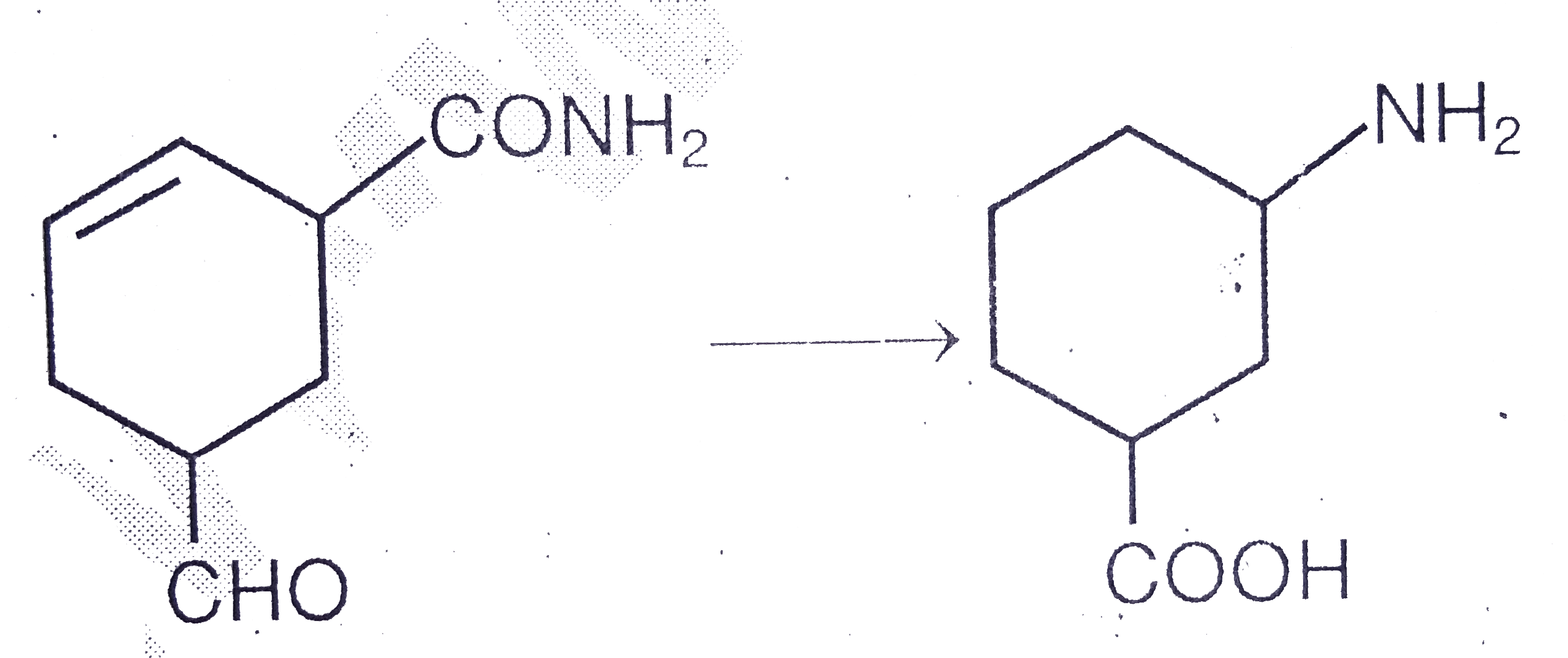What would be the reactant and reagent used to obtain 2,4 - dimethylpentan-3-ol ?
Propanal and proyl magnesium bromide
3-Methybutanal and 2- methyl magnesium iodide
2,2-Dimethylpropanone and methyl magnesium iodide
2- Methylpropanal and isopropyl magnesium iodide
The correct Answer is:D
To obtain 2,4-dimethylpentan-3-ol, we need to identify the appropriate reactants and reagents. Here’s a step-by-step breakdown of the solution:
Step 1: Identify the target compound
The target compound is 2,4-dimethylpentan-3-ol. This compound has the following structure:
- It is a pentane derivative (5 carbon atoms in the main chain).
- It has two methyl groups at the 2nd and 4th positions.
- It has a hydroxyl (-OH) group at the 3rd position.
Step 2: Determine the reactants
To synthesize 2,4-dimethylpentan-3-ol, we can start with a suitable ketone or aldehyde and an alcohol.
A good choice for the carbon skeleton would be a ketone that can provide the necessary carbon chain. In this case, we can use 2-pentanone as the starting ketone.
Step 3: Identify the reagent
To convert the ketone into the desired alcohol, we can use a Grignard reagent. A suitable Grignard reagent for this synthesis is isopropyl magnesium iodide (which can be derived from isopropyl bromide and magnesium).
Step 4: Write the reaction
The reaction can be summarized as follows:
1. Start with 2-pentanone (the ketone).
2. React it with isopropyl magnesium iodide (the Grignard reagent).
3. Finally, add water (H2O) to quench the reaction and form the alcohol.
Final Reaction Equation
The overall reaction can be represented as:
2-pentanone+isopropyl magnesium iodideH2O−−→2,4-dimethylpentan-3-ol
Conclusion
Thus, the reactants and reagents needed to obtain 2,4-dimethylpentan-3-ol are:
- Reactants: 2-pentanone
- Reagent: Isopropyl magnesium iodide
The target compound is 2,4-dimethylpentan-3-ol. This compound has the following structure:
- It is a pentane derivative (5 carbon atoms in the main chain).
- It has two methyl groups at the 2nd and 4th positions.
- It has a hydroxyl (-OH) group at the 3rd position.
To synthesize 2,4-dimethylpentan-3-ol, we can start with a suitable ketone or aldehyde and an alcohol.
To convert the ketone into the desired alcohol, we can use a Grignard reagent. A suitable Grignard reagent for this synthesis is isopropyl magnesium iodide (which can be derived from isopropyl bromide and magnesium).
The reaction can be summarized as follows:
1. Start with 2-pentanone (the ketone).
2. React it with isopropyl magnesium iodide (the Grignard reagent).
3. Finally, add water (H2O) to quench the reaction and form the alcohol.
The overall reaction can be represented as:
2-pentanone+isopropyl magnesium iodideH2O−−→2,4-dimethylpentan-3-ol
Thus, the reactants and reagents needed to obtain 2,4-dimethylpentan-3-ol are:
- Reactants: 2-pentanone
- Reagent: Isopropyl magnesium iodide
Topper's Solved these Questions
- BOOK - NCERT FINGERTPS ENGLISHCHAPTER - ALCOHOLS,PHENOLS AND ETHERSEXERCISE - HOTS7videos
ALCOHOLS,PHENOLS AND ETHERS
- BOOK - NCERT FINGERTPS ENGLISHCHAPTER - ALCOHOLS,PHENOLS AND ETHERSEXERCISE - EXEMPLAR PROBLEMS14videos
ALCOHOLS,PHENOLS AND ETHERS
- BOOK - NCERT FINGERTPS ENGLISHCHAPTER - ALDEHYDES, KETONES AND CARBOXYLIC ACIDSEXERCISE - Assertion And Reason15videos
ALDEHYDES, KETONES AND CARBOXYLIC ACIDS
Similar Questions
Knowledge Check
- Question 1 - Select One
Correct representation of 3-methylpent-3-en-2-ol is
A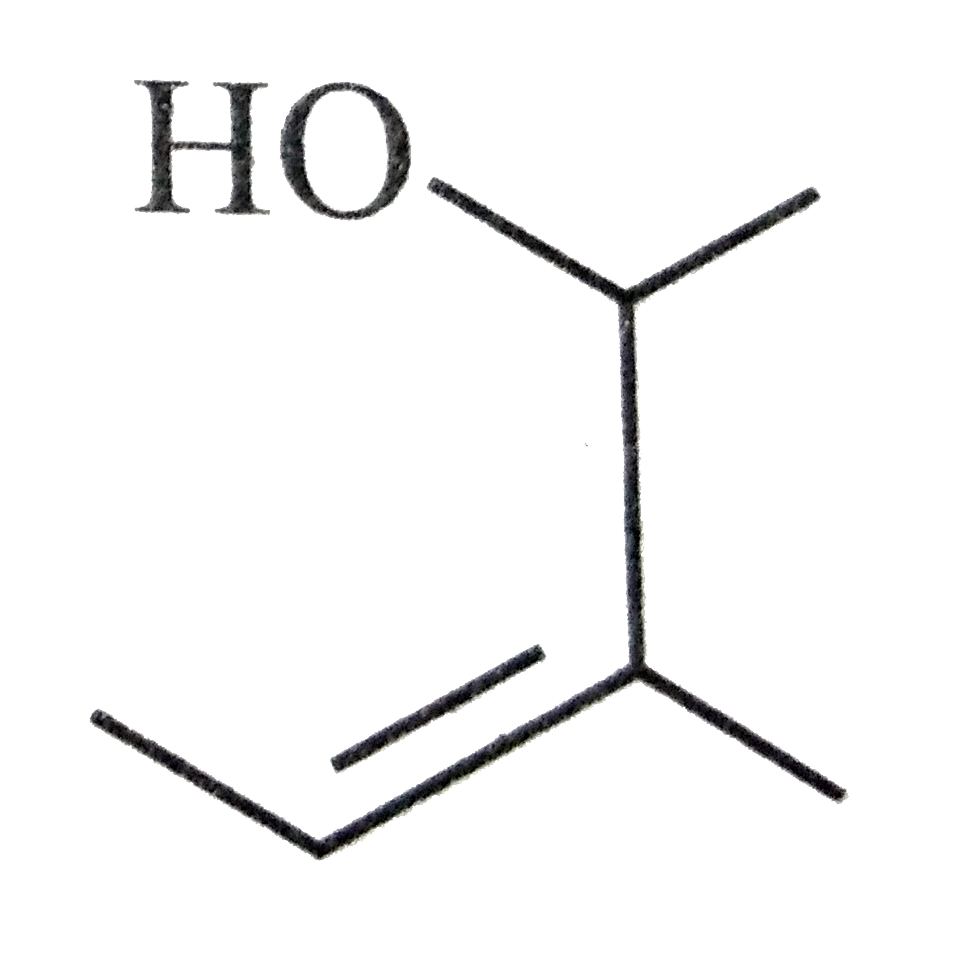 B
B C
C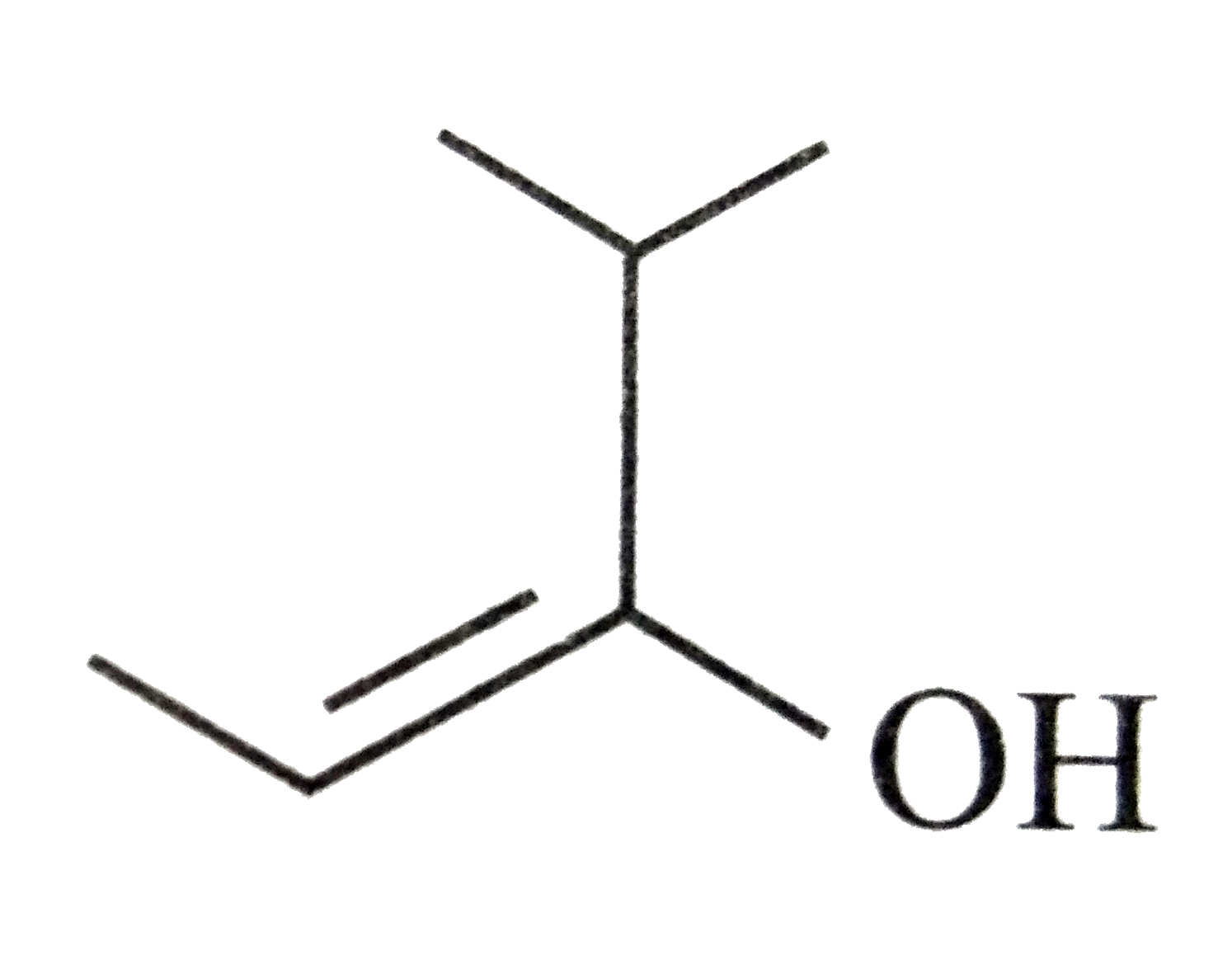 D
D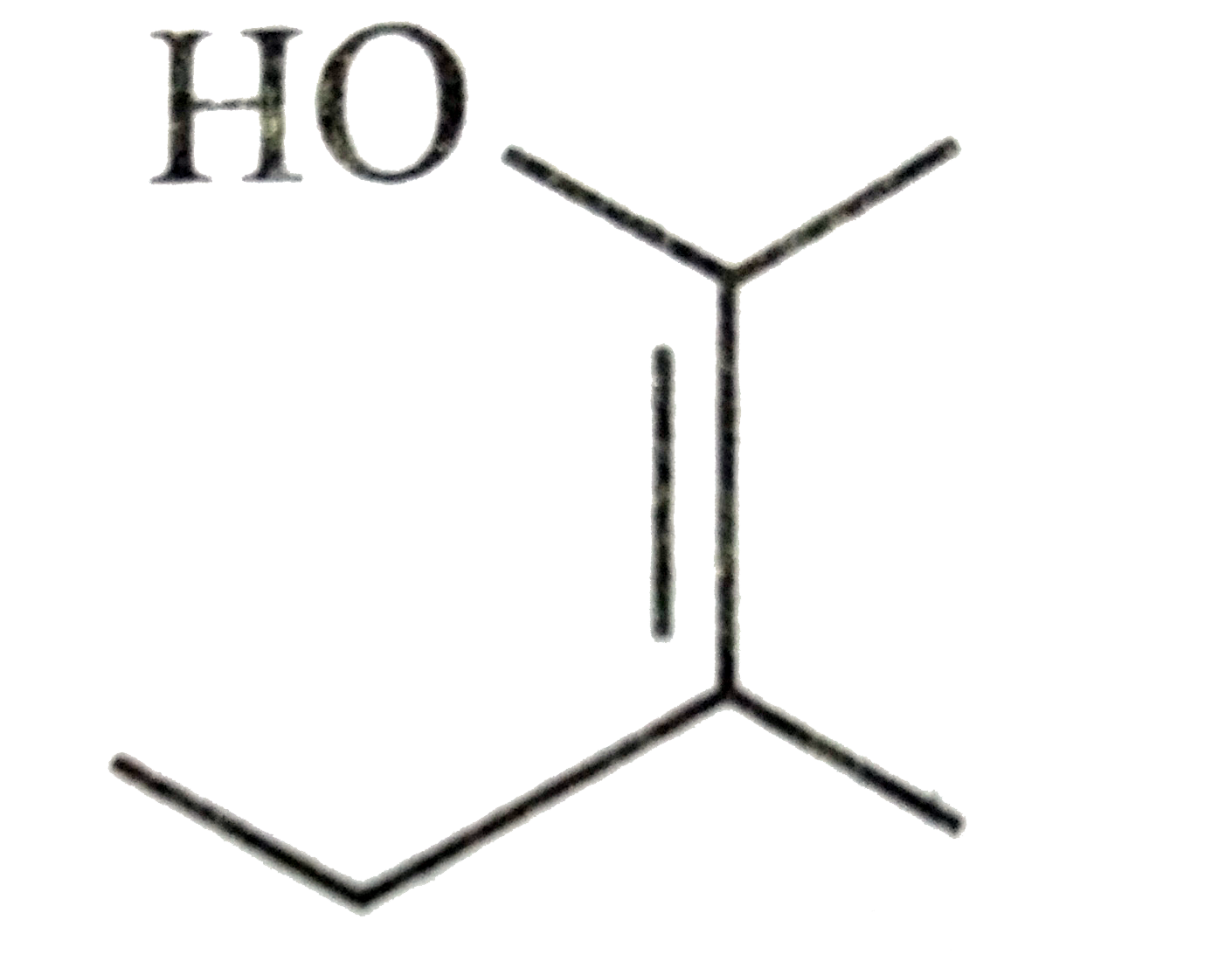
The structure of 4-Methylpent-2-en-1-ol is
View SolutionThe structure of 4-Methylpent-2-en-1-ol is
View SolutionA compound (A) reacts with thionylchloride to give a compound (B). (B) reacts with magnesium to form a Grignard reagent which is treated with acetone and the product is hydrolysed to give 2-methyl butan-2-ol. What are the structural formulae of (A) and (B) ?
View SolutionWhat should be subtracted from a3−4a2+5a−6 to obtain a2−2a+1?
View SolutionWhich of the following represents the correct IUPAC name of the compounds concerned ?
(a) 2, 2-Dimethylpentane or 2-Dimethylpentane
(b) 2, 3-Dimethylpentane or 3, 4-Dimethylpentane
(c) 2, 4, 7-Trimethyloctane or 2, 5, 7-Trimethyloctane.
(d) But-3-yn-1-ol ot But-4-ol-1-yneView SolutionThis problem is an introduction to the planning of multistep syntheses
For use, you have six reactant compounds (A through F) , and eight reagents (1 through 8), shown below
Following these lists, five multistep syntheses are outlined. For each of these, certain reactants or reagents must be identified by writing an appropriate letter or number in designated answer boxes. Write a single letter or number, indicating your choice ofthe best reactant or reagent, in each answer box.
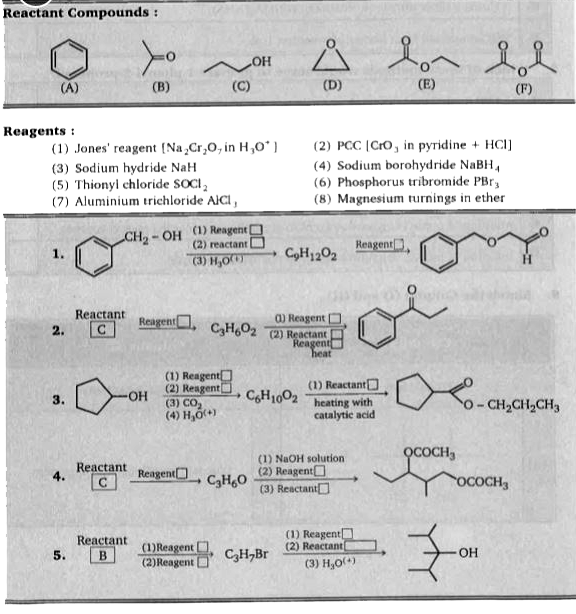 View Solution
View SolutionWhich of the following is a true nut?
View Solution


